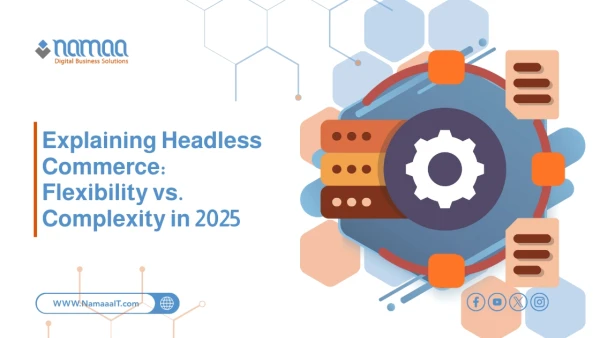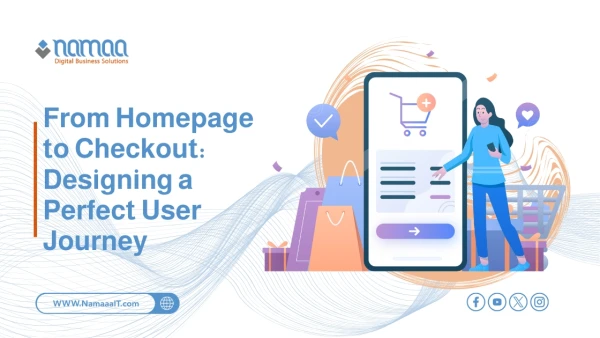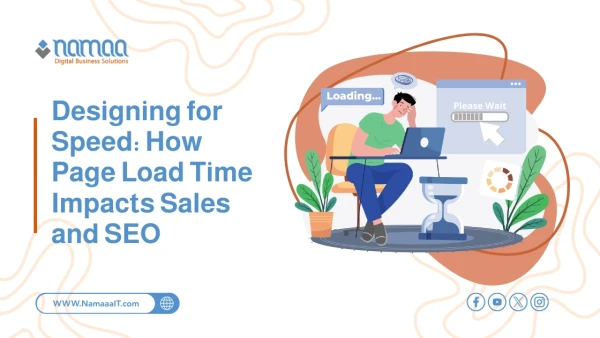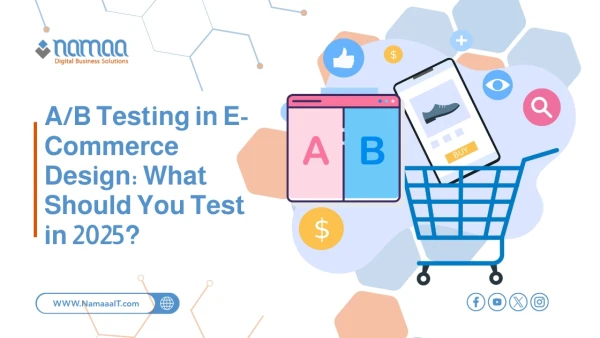In the world of digital design, strength doesn’t always lie in large elements or advanced features, but in the small details that often go unnoticed. Those brief moments when a user interacts with a product—like a button changing color on click or a simple loading indicator—are known as microinteractions. Despite their simplicity, these interactions play a critical role in enhancing user experience by providing immediate feedback and visual cues, reassuring users that the system is responsive.
These interactions aren’t just about aesthetics; they help users better understand interfaces, reduce errors, and increase engagement. When thoughtfully designed, they can turn routine tasks into delightful and satisfying experiences. In this article, we’ll explore how these tiny details can make a significant impact on UX and provide practical examples of their power in digital design.
What Are Microinteractions in UX?
Microinteractions are small moments between a user and a system designed to facilitate communication or provide clear and immediate feedback. They can be as simple as a phone vibrating after entering an incorrect code, or a button changing color on hover—but they play a vital role in creating a more human and fluid user experience. The power of microinteractions lies in their ability to guide, confirm, motivate, and sometimes even delight.
Each microinteraction is typically composed of four core components:
A trigger that initiates the interaction,
Rules that define what happens,
Feedback that shows the result,
And occasionally, a loop for repetition or updates.
Common examples include small animations when saving a file, shaking empty fields in an incomplete form submission, or any touch that makes the interface feel alive and responsive.
Though users may not always consciously notice them, the absence or poor execution of microinteractions leads to cold, rigid experiences. On the other hand, when designed well, they build a sense of harmony and natural interaction, significantly increasing user satisfaction. They are not decorative extras but functional tools that communicate effectively without distracting the user.
Why Do Small Details Influence User Satisfaction?
In UX design, small details are not a luxury—they’re essential. These subtle touches—like smooth transitions or immediate button responses—are what separate a good product from a great one. When a user clicks something and sees a natural, quick response, they feel understood by the system. This creates a sense of comfort and trust. In contrast, the absence of such details can make the system feel slow or unresponsive, leading to frustration even if there’s no technical issue.
The average user may not be familiar with terms like “enhancing fluidity” or “boosting responsive feedback,” but they instantly feel the difference. What seems trivial to a developer may be critical in keeping a user engaged. For example, a subtle sound confirming that a message was sent can prevent unintentional repeated clicks.
Tiny details help craft an emotional experience with the product. Users may not always remember the core functions, but they’ll remember how the product made them feel. Was it easy? Intuitive? Fun? That’s where products that focus on the details truly stand out.
In crowded markets, these small touches can be the difference between user loyalty and switching to a competitor. Every tiny interaction, every sensitive response, is a chance to leave a lasting positive impression. So, these details aren’t just important—they’re a strategic necessity for long-term user relationships.
Understanding the Difference Between Microinteractions and Visual Animations
Many confuse microinteractions with visual animations, but there is a fundamental difference. Microinteractions are about function and responsiveness, while animations are often used for visual enhancement or storytelling. In other words, microinteractions serve a clear functional goal, while animations may be purely aesthetic or aim to grab attention without a direct interactive purpose.
For instance, when a user inputs a wrong password and the field shakes, that’s a microinteraction: it immediately signals an error. But when a user transitions between pages and elements move smoothly for a more polished feel, that’s a visual animation. A microinteraction is a dialogue, while animation can be a visual monologue.
Microinteractions must be quick, light, non-distracting, and clearly purposeful. Animations, on the other hand, can be longer and visually richer, but if overused, they may hurt performance or distract the user.
Another key difference is that microinteractions always respond to user behavior, while animations can run automatically. Microinteractions are triggered by action; animations may occur passively.
Both elements are important for a complete experience, but understanding the difference ensures each is used appropriately without overcomplicating the design. The balance between function and beauty starts here.
How Microinteractions Reduce Errors and Improve Understanding
One of the strongest benefits of microinteractions is their ability to reduce user errors and improve understanding of the interface. Users don’t always read instructions or follow steps precisely. That’s where small interactions come in to guide them smoothly, without the need for strict alerts or lengthy explanations.
A simple example: in a form, showing a visual cue when an email is entered in an incorrect format helps the user fix it instantly—without waiting until they hit “Submit.” These real-time hints boost understanding and lower the chance of failure.
Microinteractions also promote visual learning. When users see the immediate outcome of their actions, they learn how the system works more quickly. Whether it’s a color change, tooltip display, or element movement—these cues build intuitive knowledge without needing a user manual.
Psychologically, this kind of feedback makes the user feel guided instead of punished. It reduces anxiety from making mistakes and encourages free exploration. Users don’t fear interaction—they feel the system will gently steer or alert them when necessary.
Using Hints and Visual Cues to Improve UX
Visual cues and hints play a vital role in making the user experience clearer and smoother. These design elements—icons, colors, lines, or subtle motion cues—act as signposts helping users understand what to do, what’s happening, and what comes next. For example, a “Next” button changing color when required fields are filled signals that the form is ready to submit—without needing extra instruction.
Effective visual hints don’t need text. Shadows, gradients, and arrows can naturally guide the human eye to the most important elements. Buttons that respond to movement let users know instantly that they’re interacting with the right element.
The key to success with hints is balance. Too many cues can overwhelm; too few create confusion. Every visual hint should have a clear purpose and avoid distracting the user.
It’s also crucial to test these cues across different user segments to ensure clarity and comprehension. What seems clear to one group may not be to another—especially across cultural contexts or for users with special needs.
Aligning Microinteractions With Brand Identity
When microinteractions are designed to reflect the brand’s identity, they become more than functional—they become expressive communication tools that reinforce the brand’s personality. These interactions become part of the product’s voice and help embed a consistent brand image in the user’s mind.
For instance, a brand with a fun and casual tone might use lively microinteractions like a bouncy button rejection or playful illustrations upon success. A more professional brand might opt for calm, smooth transitions with neutral colors and precise movement.
Microinteractions tied to a brand’s identity go beyond tone—they include color, typography, motion rhythm, and even sounds. Every element should reflect core brand values. When interactions are consistent with other identity elements, users feel they’re engaging with a unified personality, enhancing loyalty and overall perception.
Notable examples include the “ping” sound in messaging apps or subtle vibrations upon completing a purchase in shopping apps. These interactions may be small, but they leave a strong psychological imprint because they speak the brand’s familiar language.
Measuring the Impact of Microinteractions on KPIs
Although microinteractions are small by nature, their effect on a website or app’s performance can be significant. Measuring this impact requires more than visual impressions—it demands real data and user behavior analysis.
Key performance indicators (KPIs) related to microinteractions include:
Completion Rate: Improving a simple form interaction can lead to more users completing it.
Engagement Rate: Data can show whether users respond to interactive elements and complete tasks more quickly.
Time on Task: If microinteractions help guide users and reduce confusion, task completion times decrease—indicating better efficiency.
Tools like Google Analytics, Hotjar, and heatmaps help monitor user behavior before and after implementing microinteractions. A/B testing can compare different interaction approaches to see which improves outcomes.
Direct user feedback is also valuable in evaluating whether microinteractions added clarity or caused confusion.
Summary
✅ Microinteractions can increase user satisfaction by up to 30% by offering instant responses that show the system is responsive.
✅ Around 70% of users prefer products with visual hints, as they reduce the need for explanation and help users navigate and understand faster.
✅ Platforms that align microinteractions with brand identity achieve 25% higher user loyalty, as users feel the interface reflects a personal and consistent tone.
✅ Improving just one interaction in the UI can reduce user errors by up to 40%, thanks to real-time indicators and notifications that help guide behavior.
✅ Products that use A/B testing to optimize microinteractions see up to 20% increase in conversion, as they make improvements based on real user data.









